Samurai & Ninja Dress-Up Experience! Walk Through History in This Immersive Tour
features
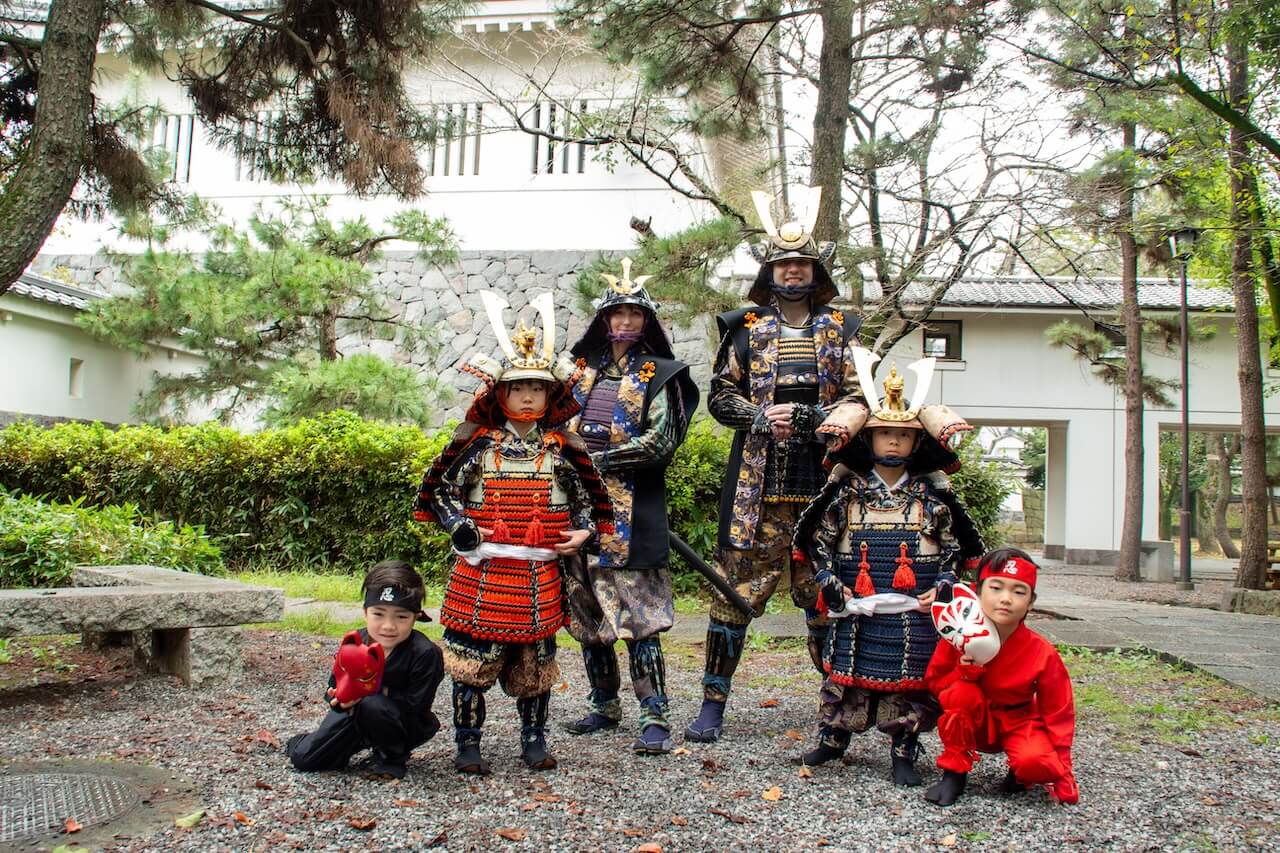
Located in northeastern Saitama Prefecture, Gyoda City has deep historical roots, appearing in Japan’s oldest existing poetry collection "The Man'yōshū," as well as in ancient geography manuscripts, collectively known as “Fudoki,” under the name “Sakitama”—which some say is Saitama Prefecture’s former name. The city is mostly flat, shaped by the Tone and Arakawa rivers, and is home to the legendary Oshi Castle, a fortress so strong that even one of the great unifiers of Japan, Toyotomi Hideyoshi, could not take it down. Gyoda is also known as a major production center for "tabi," traditional split-toe socks, making it a great place to experience Japanese history and culture.
Updated on:2025.06.17
Transform Into a Samurai or Ninja at the Oshi Castle Bus Terminal Tourist Information Center
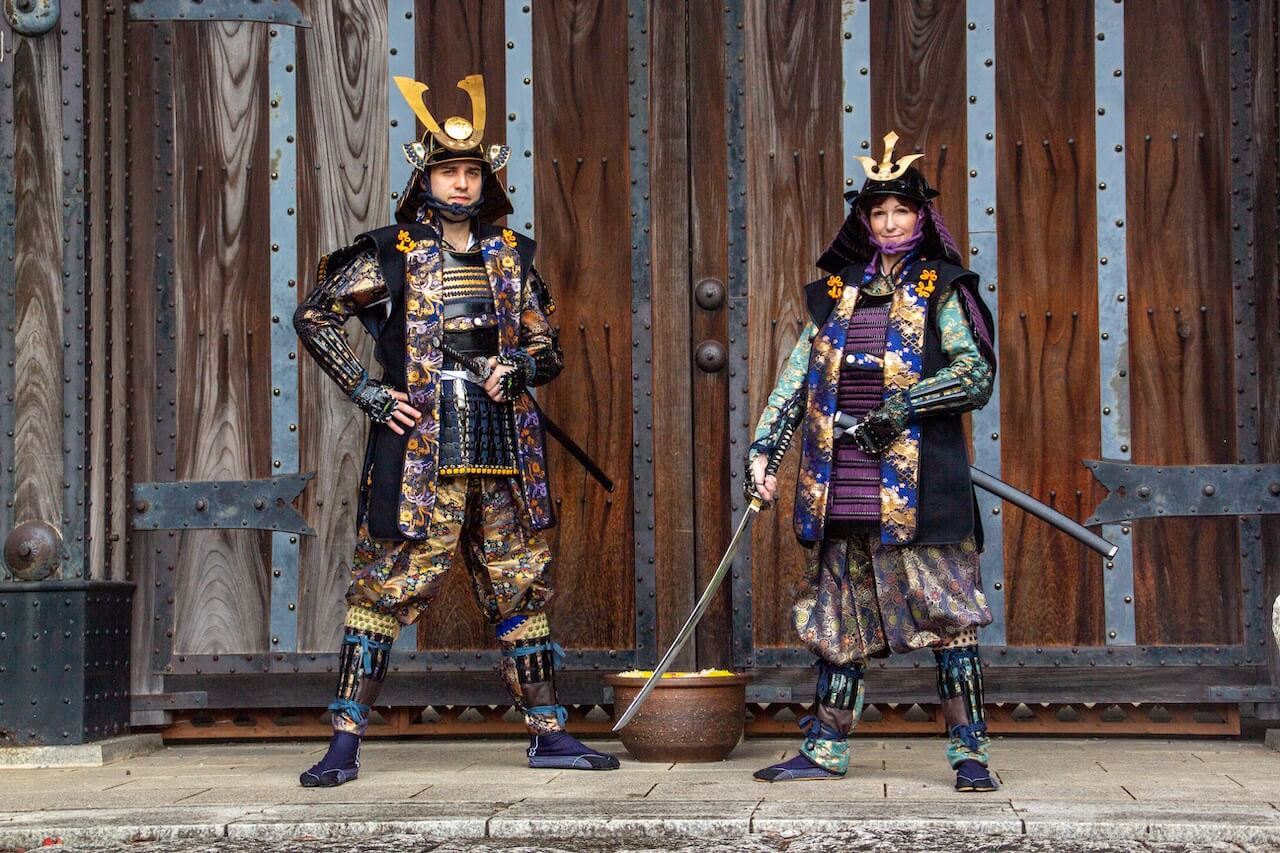
In Japanese period dramas, anime, and historical games, you often see warriors in striking armor or mysterious ninjas moving in the shadows. At the Oshi Castle Bus Terminal Tourist Information Center, you can rent a full suit of samurai armor or a ninja outfit and take memorable photos with the famous Oshi Castle as your backdrop.
The Oshi Castle Samurai Costume Experience offers three different plans. The Ume plan provides a helmet, chest armor, and sword, making it easy to get a taste of the samurai spirit. The Take plan features a full samurai look, complete with a kosode, hakama, and tabi for a more immersive experience. The Matsu plan takes it a step further, with a professional photographer accompanying you for an outdoor photo session at Oshi Castle.
Dress up in traditional armor, grip a sword, and capture a striking moment in front of this historic castle!
For reservations: https://www.gyoda-kankoukyoukai.jp/en/archives/tour/oshi-castle-samurai-costmume-experience
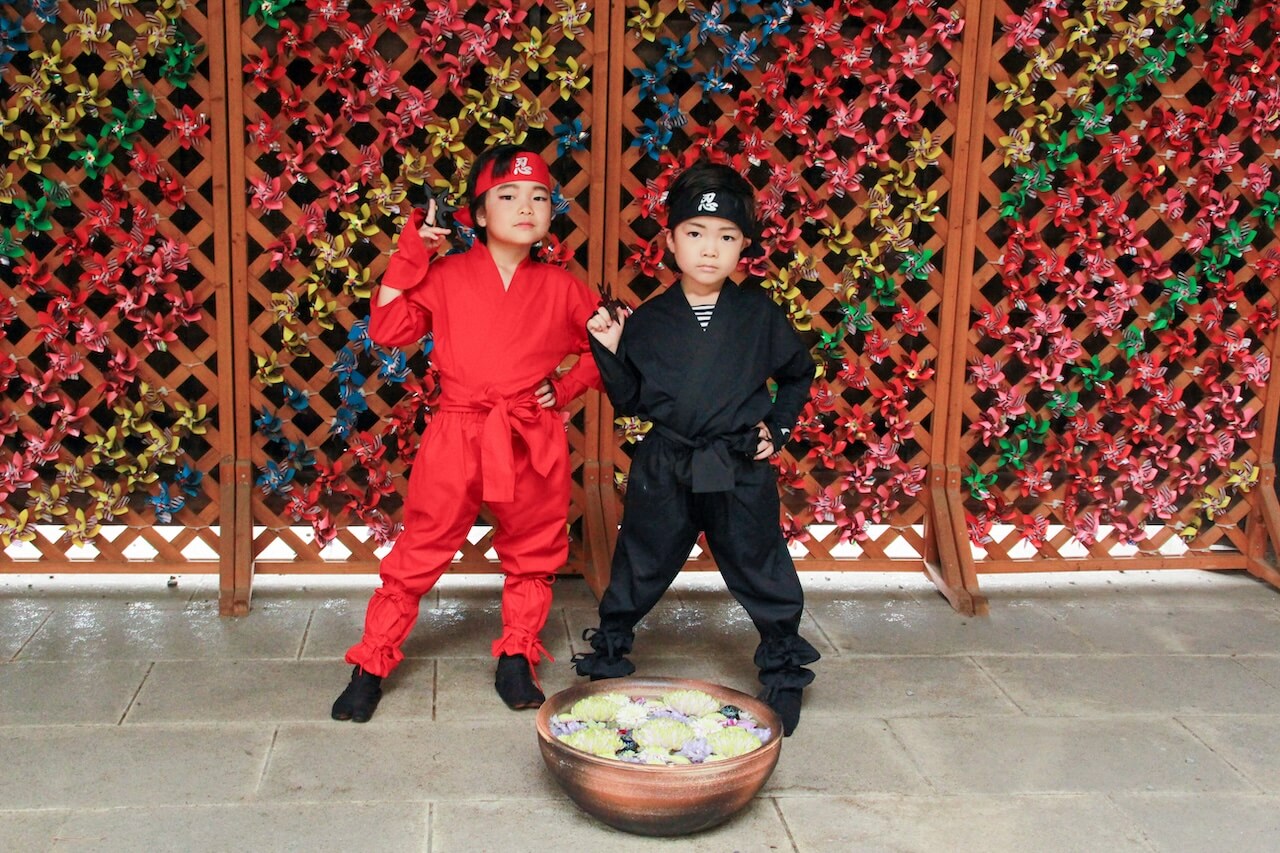
If being a ninja is more your style, the Oshi Castle Ninja Experience lets you embrace the way of the shinobi. You can choose among three variations: the Ume plan includes a fun, game-like shuriken throwing experience, the Take plan lets you dress up in a full ninja outfit, and for the ultimate experience, the Matsu plan combines the ninja outfit with a professional photoshoot.
Oshi Castle has a deep connection with ninjas—during the Sengoku period, the castle was ruled by the Narita clan, who were allied with the Hojo faction and who are famous for their elite Fuma ninja group. If you love Japanese history, this is a must-try experience.
For reservations: https://www.gyoda-kankoukyoukai.jp/en/archives/tour/oshi-castle-ninja-experience
Oshi Castle Bus Terminal Tourist Information Center
Address: 3-5, Honmaru, Gyoda-shi, Saitama
Access: About a 13-minute walk from Chichibu Railway’s Gyodashi Station
Hours: March–November: 9:30 AM–4:30 PM, December–February: 10:00 AM–4:00 PM
March Into Oshi Castle, the Fortress That Withstood a Water Siege
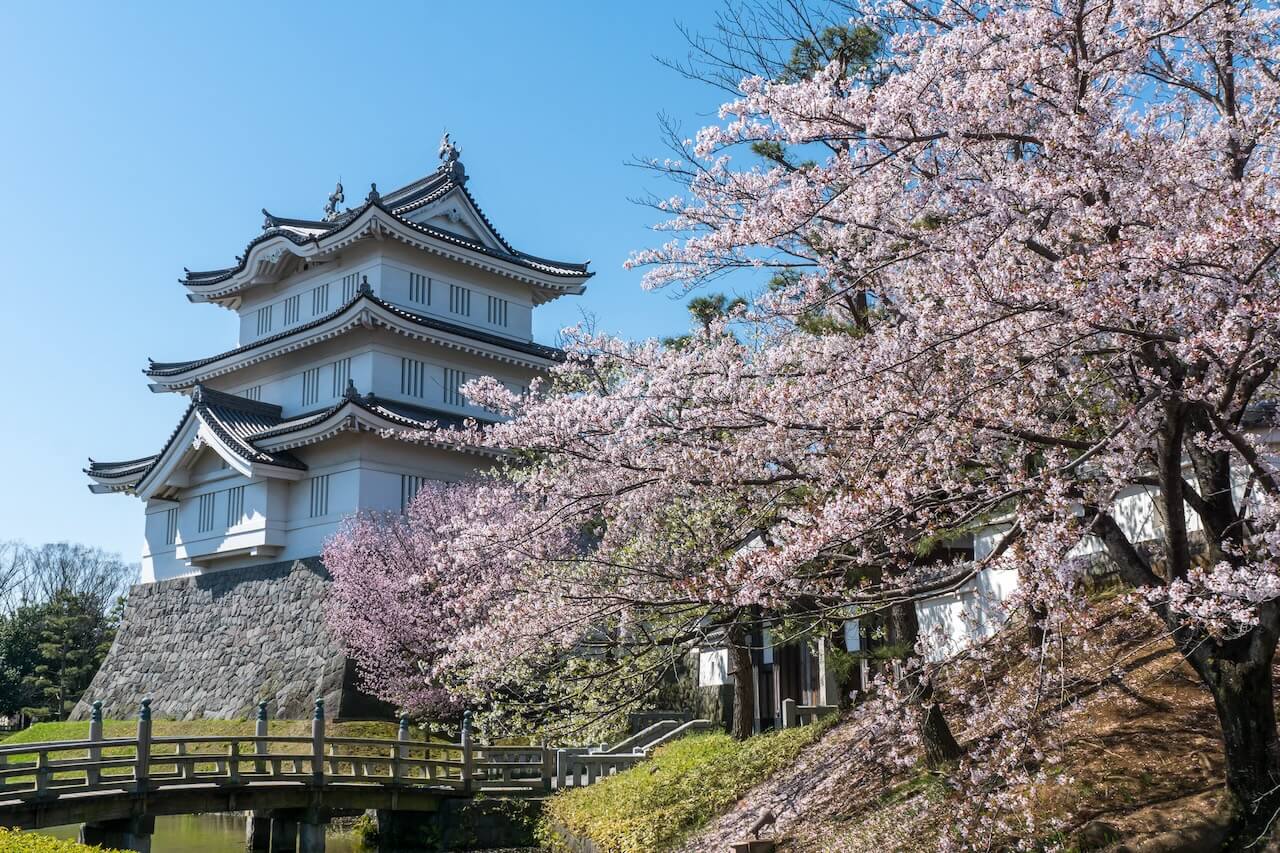
Oshi Castle was built during the Muromachi period (1469-1486). At the time, Gyoda City was sandwiched between the Tone and Arakawa rivers to the north and south, with underground springs feeding surrounding marshes that acted as natural moats especially prominent around Oshi Castle.
This strategic location played a critical role in warfare. During Toyotomi Hideyoshi’s campaign to unify Japan in 1590, his general, Ishida Mitsunari, attempted to flood the castle by diverting the two rivers. Despite the massive water attack, Oshi Castle held its ground. The legend goes that the fortress appeared to “float” on the water, earning it the nickname “The Floating Castle.” This episode has been immortalized in films like The Floating Castle and popular games such as Nobunaga’s Ambition and Touken Ranbu Warriors.
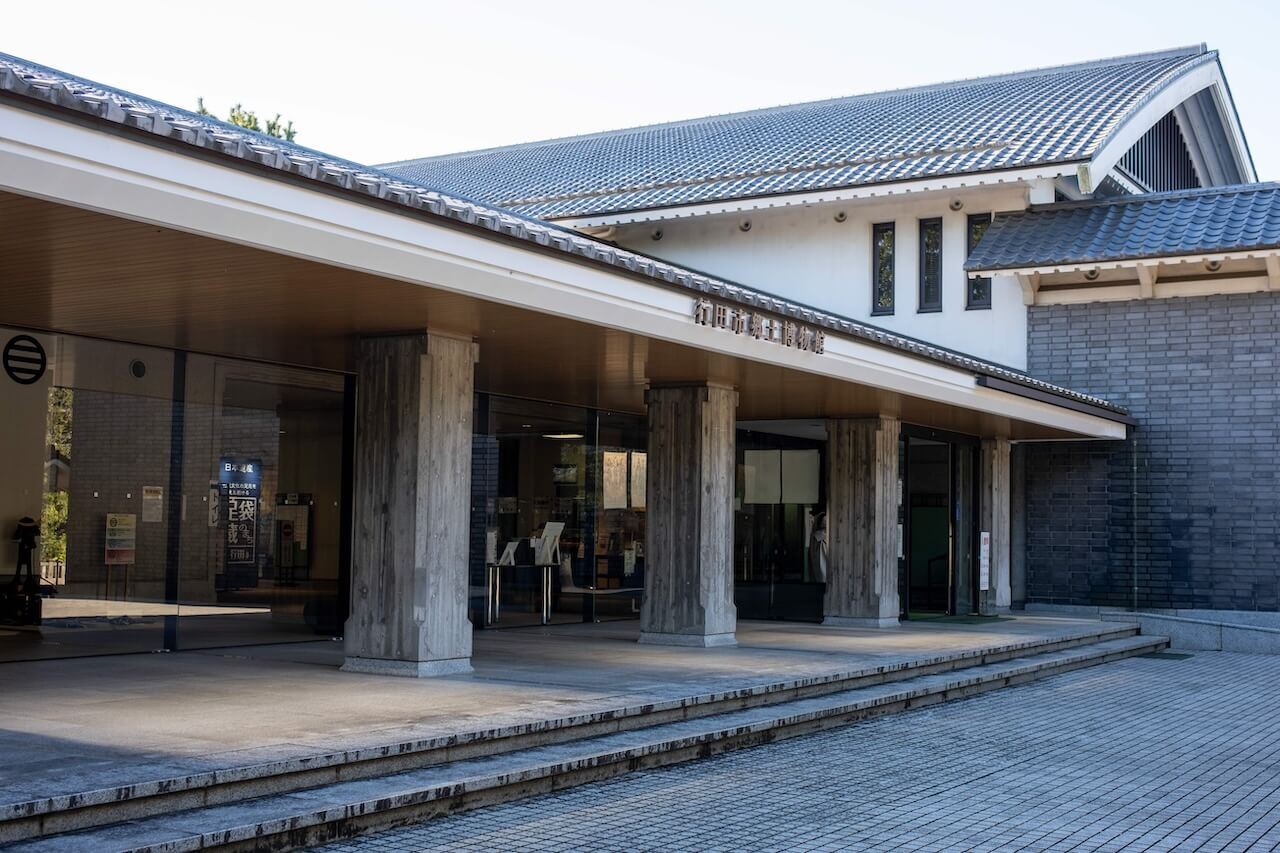
Today, the ruins of Oshi Castle have been transformed into a historical park that also houses the Gyoda City Museum. Inside, you can dive into the city’s history and culture. Explore exhibits on the castle’s construction, view detailed models of its interior, admire “haniwa” terracotta figures excavated from nearby ancient tombs, and learn about the history of tabi socks—a local specialty closely tied to Japan’s kimono culture.
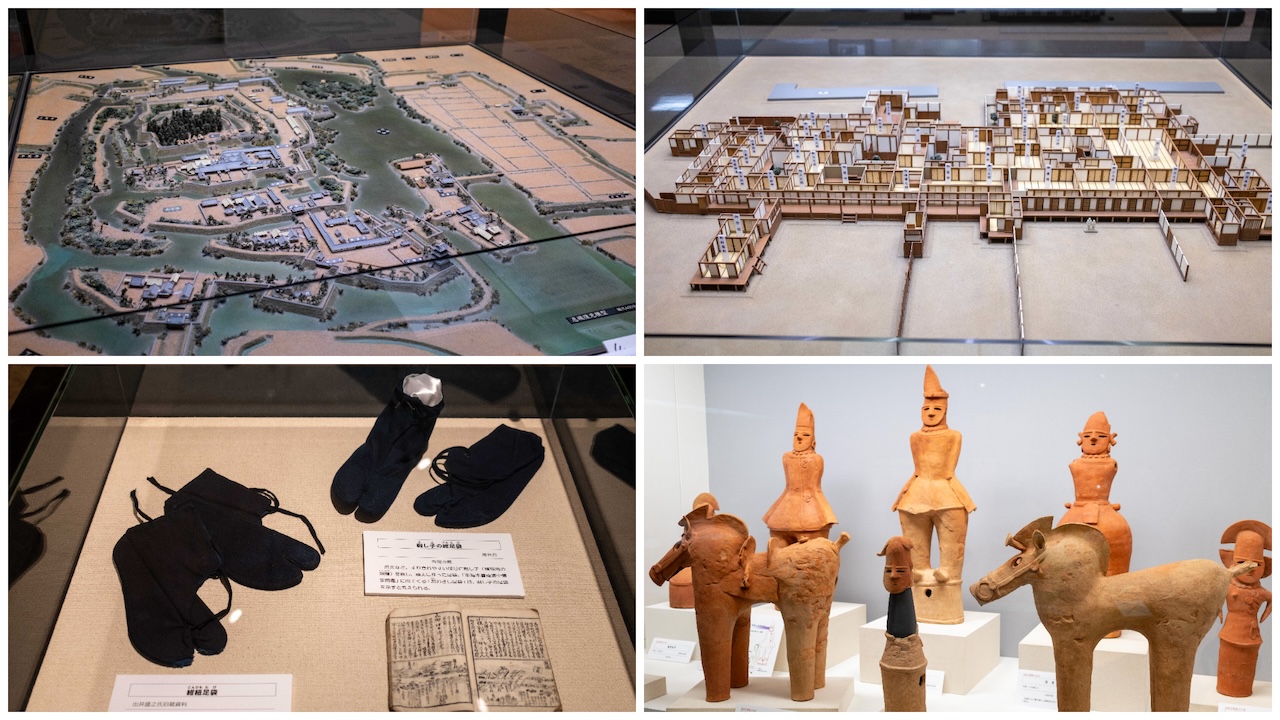
One of the park’s highlights is the restored three-story turret, which is connected directly to the museum. Climb to its top floor for a breathtaking panoramic view of Gyoda, and imagine the castle lord surveying his lands from this very spot. On a clear day, you might even catch a glimpse of Mount Fuji!
Oshi Castle
Address: 17-23, Honmaru, Gyoda-shi, Saitama
Access: About a 15-minute walk from Chichibu Railway’s Gyodashi Station
Relax at Suijo Park – Former Castle Moat Turned Into a Floral Oasis
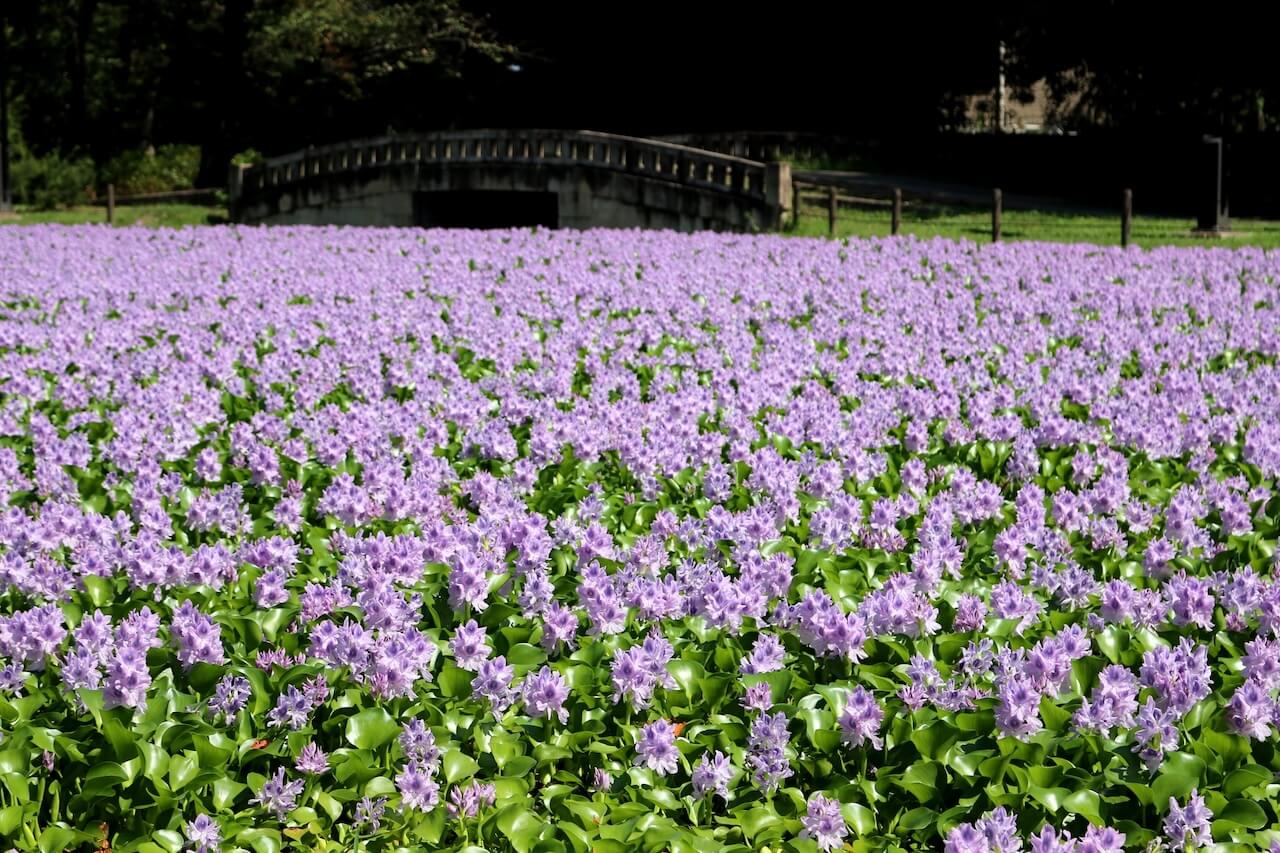
After exploring Oshi Castle, take a relaxing stroll through Suijo Park, which was once part of the castle’s moat. Today, the park is best known for its beautiful water hyacinths. From September to October, the Aoi Pond—spanning approximately 1,700 square meters—comes alive with delicate pale purple blooms, creating a stunning seasonal display.
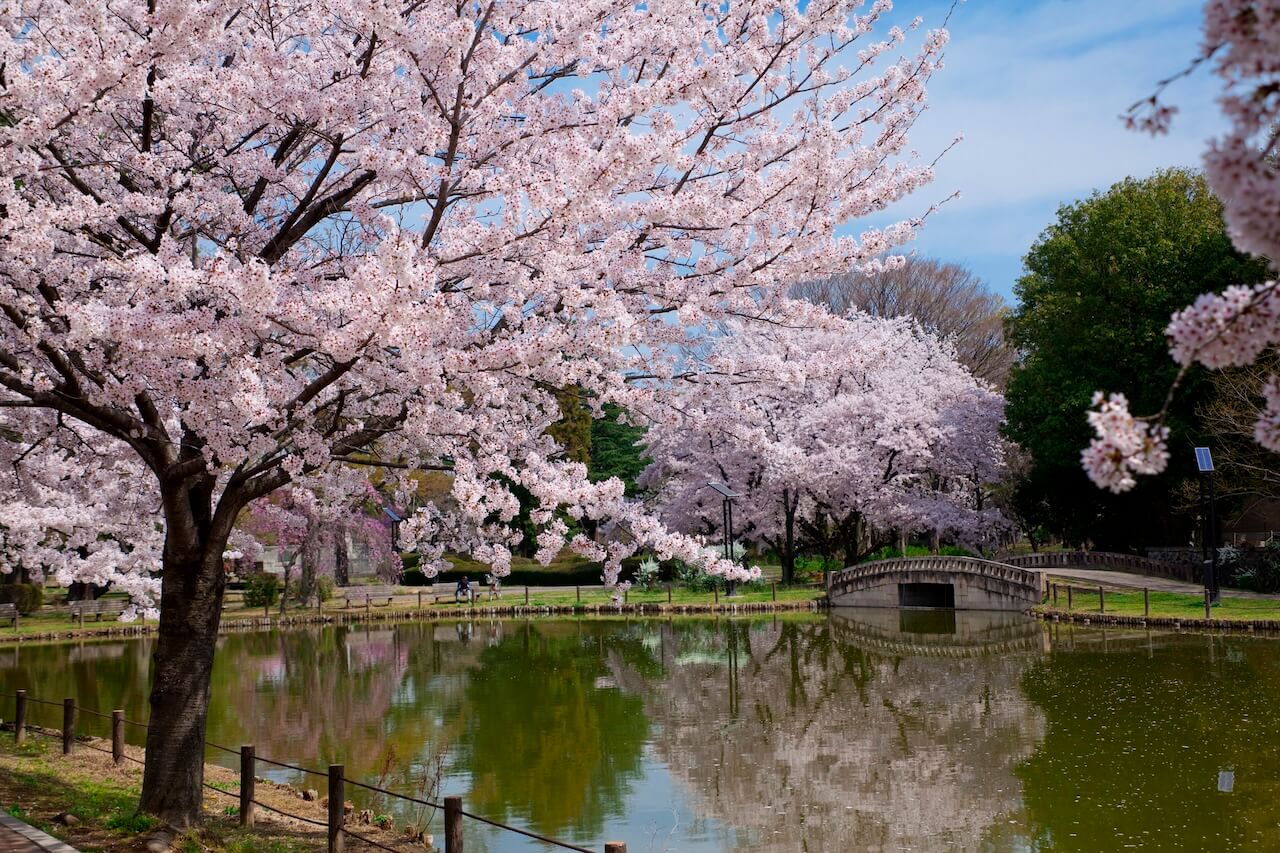
On the west side of the park, near Shinobu Pond, you’ll find one of Gyoda’s best-kept cherry blossom spots. Around 200 Somei Yoshino cherry trees burst into bloom from late March, creating a stunning yet peaceful setting—perfect for a quiet hanami experience away from the crowds.
Suijo Park
Address: 1249, Suijo Park, Gyoda-shi, Saitama
Access: About a 13-minute walk from Chichibu Railway’s Gyodashi Station
Seek Blessings and Protection From Above at the Popular Gyoda Hachiman Shrine
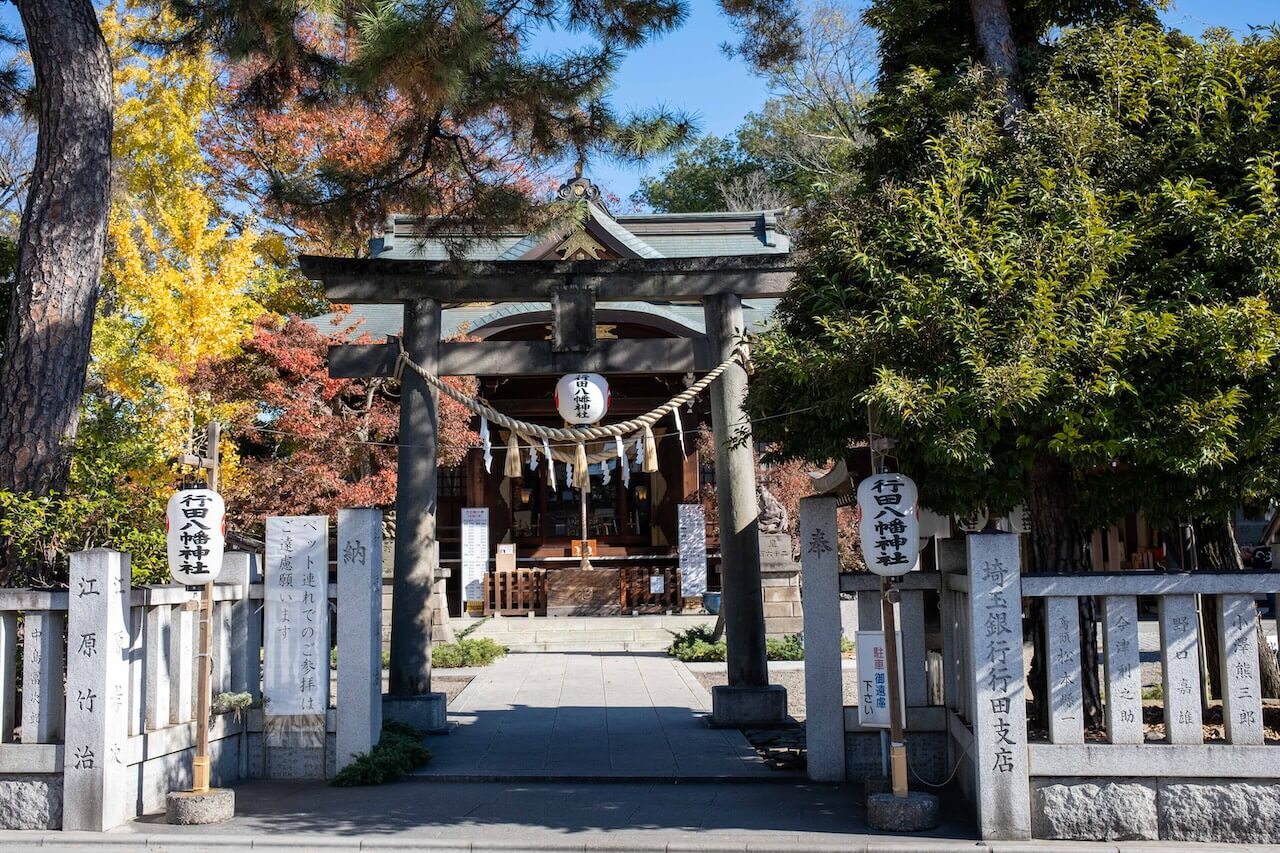
Next, pay a visit to Gyoda Hachiman Shrine to pray for blessings from the divine. Founded during the Heian period (794–1180) by Minamoto-no-Yoriyoshi and his son Yoshiie, the shrine is said to help with everything from sleepless nights to difficult diseases and persistent misfortune—hence its nickname, the “Shrine of Sealing” (Fujinomiya).
Within the shrine grounds are several smaller shrines, including Meno Shrine (Eye Shrine), which is believed to bring blessings for eye health; Kasamori Inari Shrine, said to help with skin ailments; and Okuninushi Shrine, which honors the Seven Lucky Gods associated with Oshi Castle. A popular attraction in recent years is the Nade Momo, a peach-shaped stone that is believed to ward off bad luck when touched.
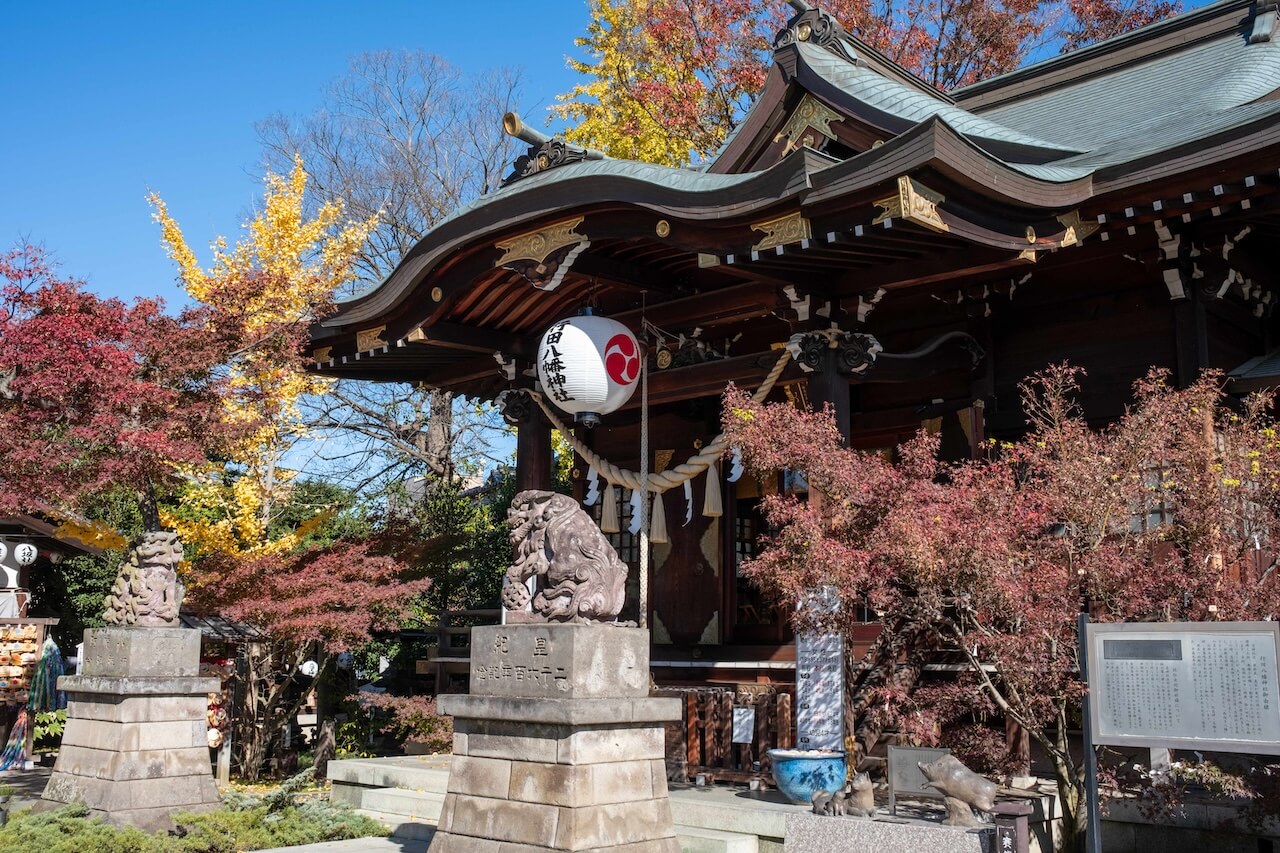
Another highlight of Gyoda Hachiman Shrine is its “hanachozu.” “Temizuya” or “chozuya” are water basins traditionally used for ritual hand and mouth purification at shrines. In 2020, the shrine decorated the basins with fresh seasonal flowers to uplift visitors during the pandemic. Today, water basins of various sizes throughout the shrine grounds are adorned with floating flowers, with the arrangements changing every week.
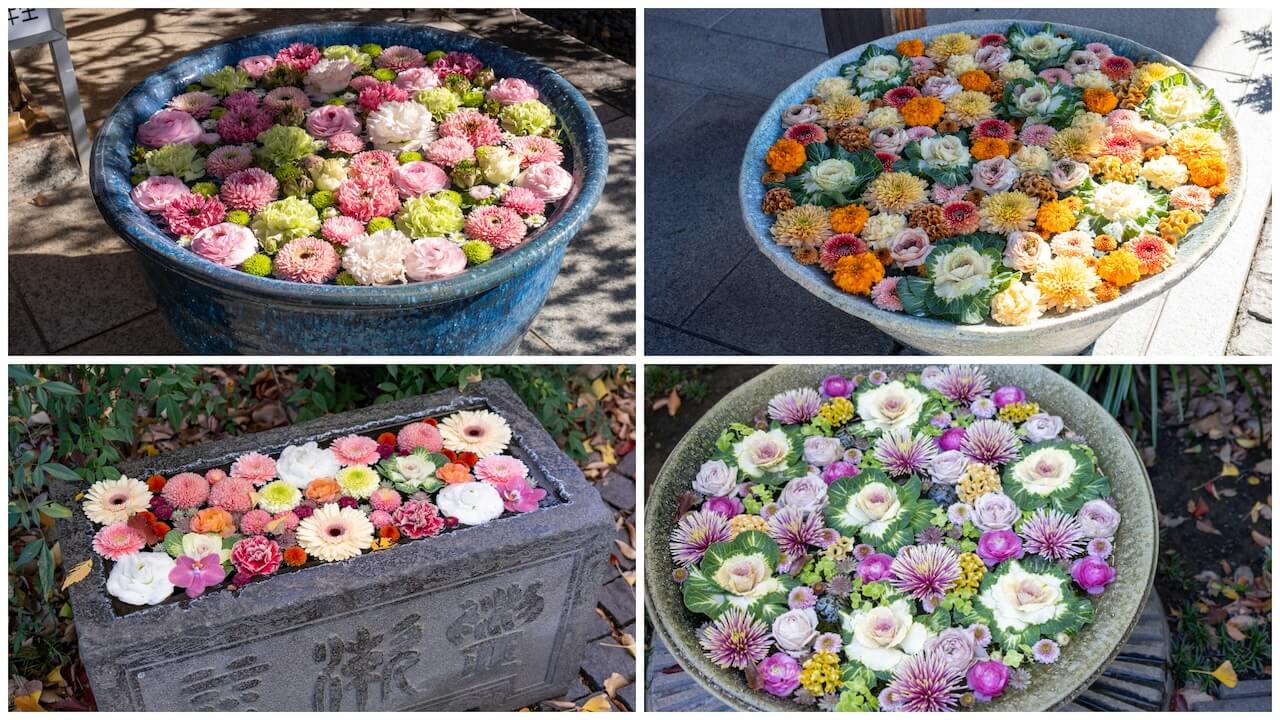
The practice has even spread throughout the city, inspiring the launch of the Gyoda Hanachozu Week, held from the 1st to the 14th of each month (or from the 15th to the end of the month in November and January). During this period, local shops and homes place jars and basins filled with fresh flowers beneath their eaves, transforming the entire town into a charming and serene floral spectacle.
Gyoda Hachiman Shrine
Address: 16-23, Gyoda, Gyoda-shi, Saitama
Access: About an 8-minute walk from Chichibu Railway’s Gyodashi Station
Step Back in Time in Kawagoe and Enjoy the Old-Town Charm in Kimono
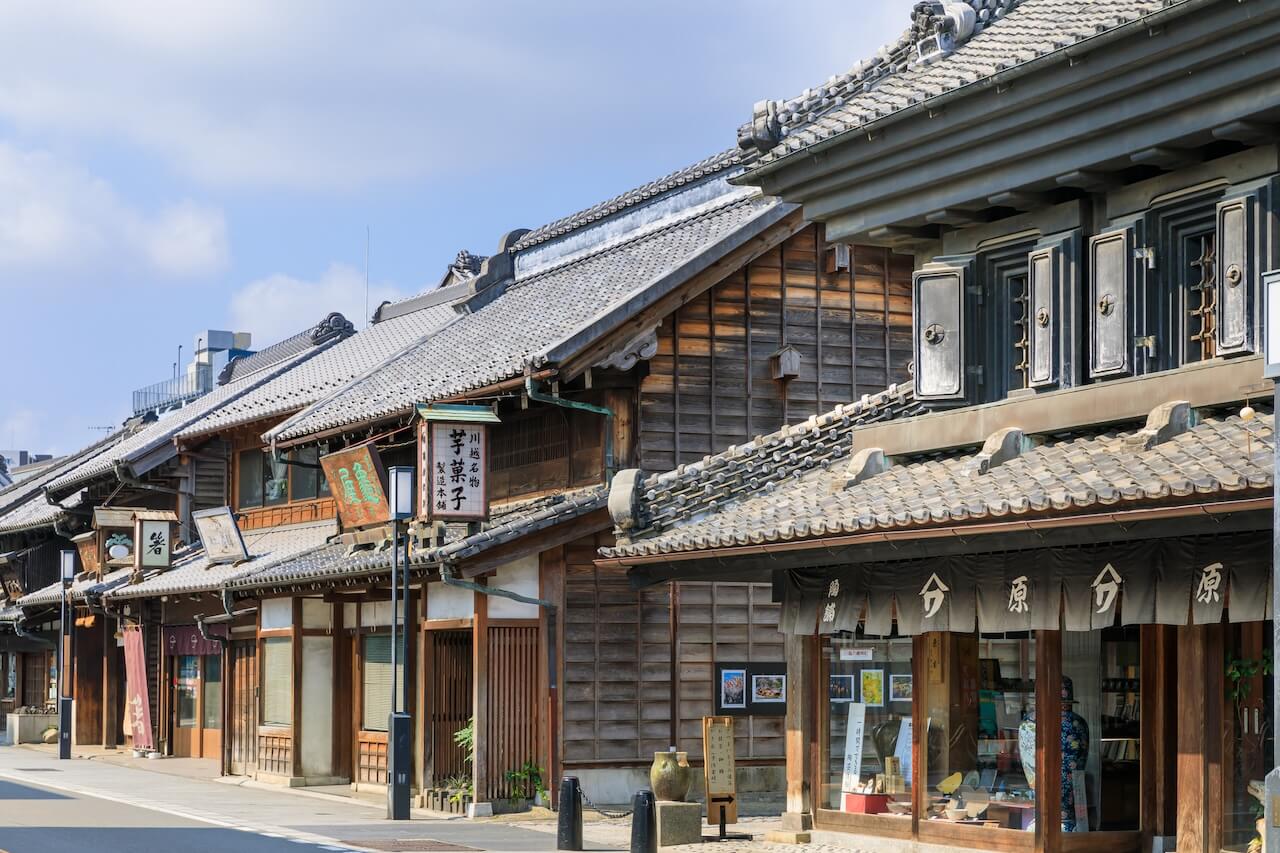
After exploring Gyoda’s historical sites, why not take a trip to Kawagoe, a popular destination rich in history and closely tied to Toyotomi Hideyoshi who led the Siege of Odawara? There are several ways to get there, but the easiest route is to take the JR Line from Gyoda Station, transfer to the Kawagoe Line at Omiya Station, and arrive at Kawagoe Station in about an hour. From there, you can take a bus or walk to the Koedo (Little Edo) district, known for its Edo-style facade.
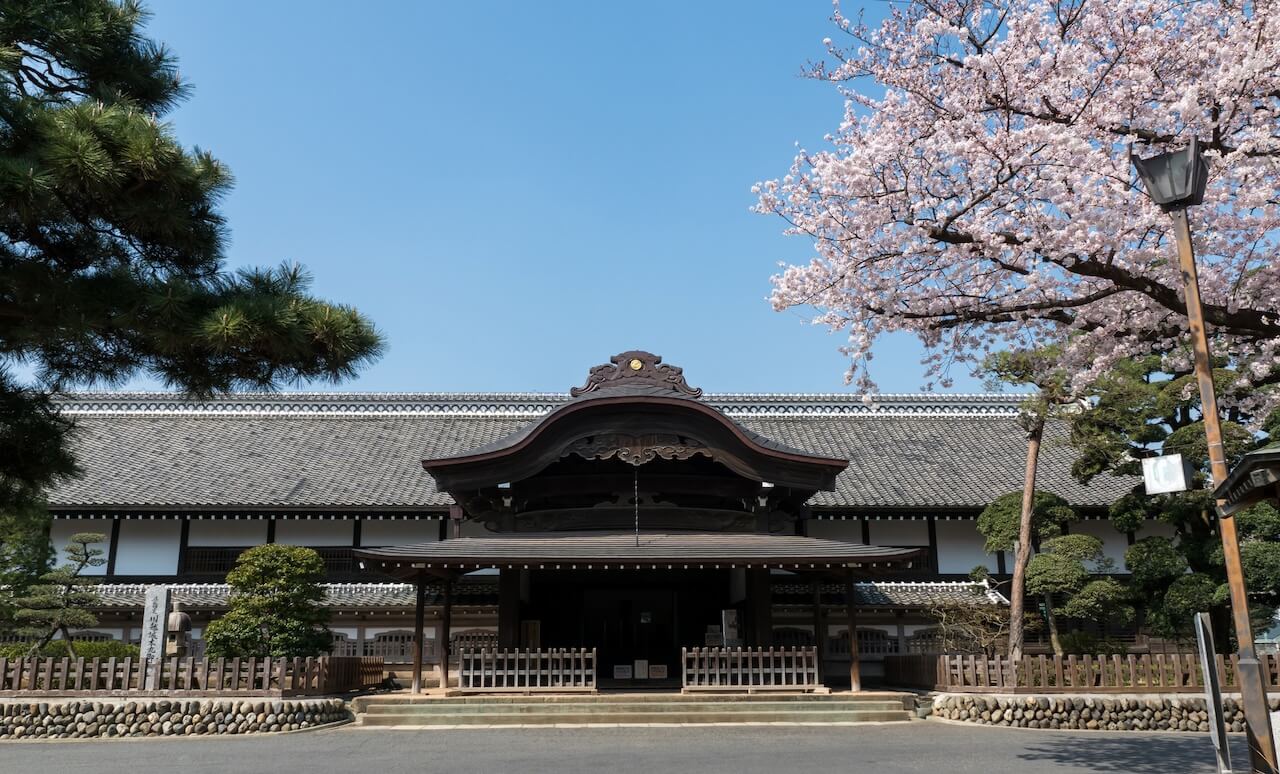
The defining features of warehouses back in the Edo period (1600–1868) were tiled roofs, black plaster-coated walls, and imposing wooden double doors. Many merchant houses adopted this style of architecture, known as “kurazukuri,” as a safeguard against the frequent fires of the time. Today, these historic buildings remain in only one part of Kawagoe—Ichiban-gai Street—allowing visitors to step back in time and experience the charm of old-time Japan. Though they may look similar at first glance, each building has its own unique details and charm!
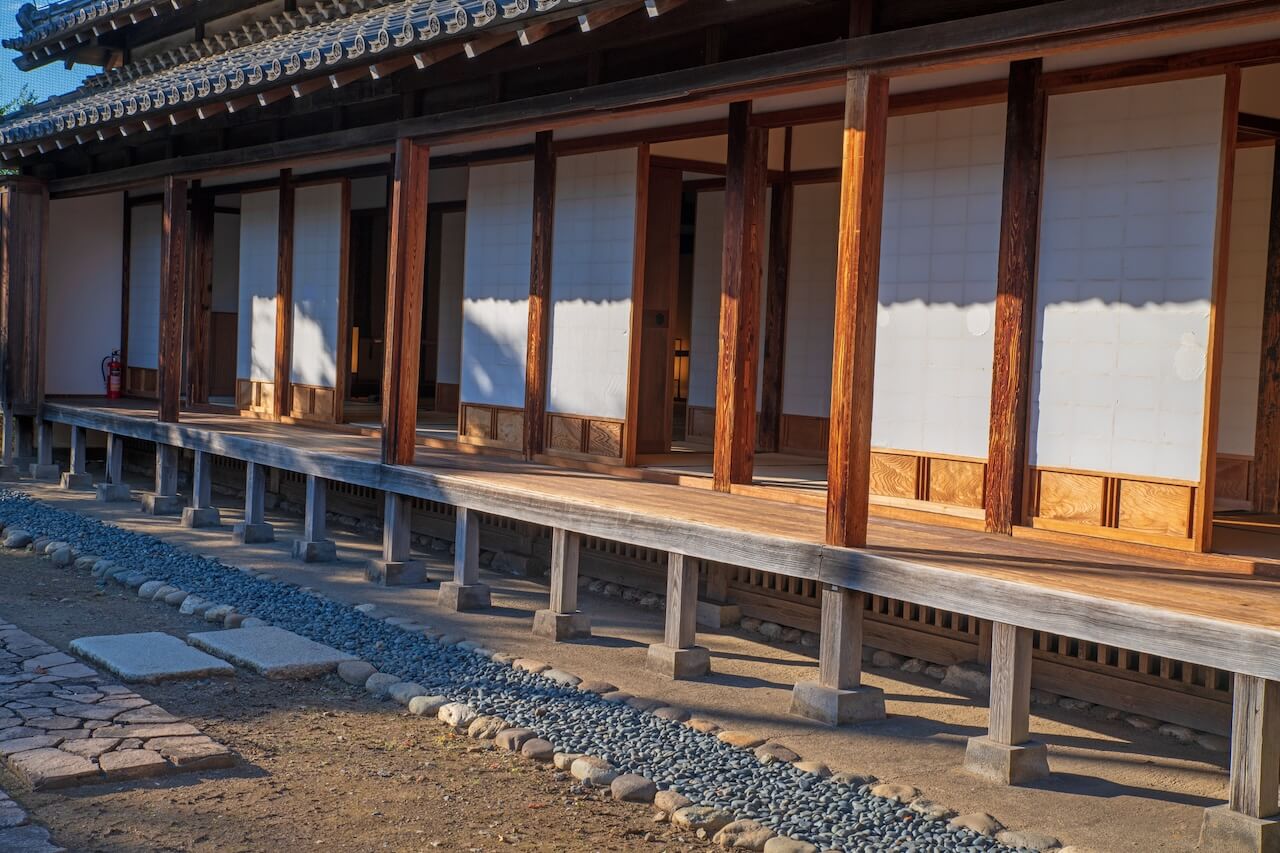
Kawagoe is also home to Kawagoe Castle, which houses the only original honmaru goten (main palace) in eastern Japan. Originally built in 1457 by the Ogigayatsu branch of the Uesugi clan who ruled the region during the Muromachi period (1336–1568), the castle was constructed as a strategic stronghold against their rivals, the Ashikaga clan. It later fell to the Hojo clan before being conquered by Maeda Toshiie during the Siege of Odawara. After Tokugawa Ieyasu was relocated to the Kanto region, Kawagoe Castle became part of his domain, securing its place in Japanese history as a key political and military site.
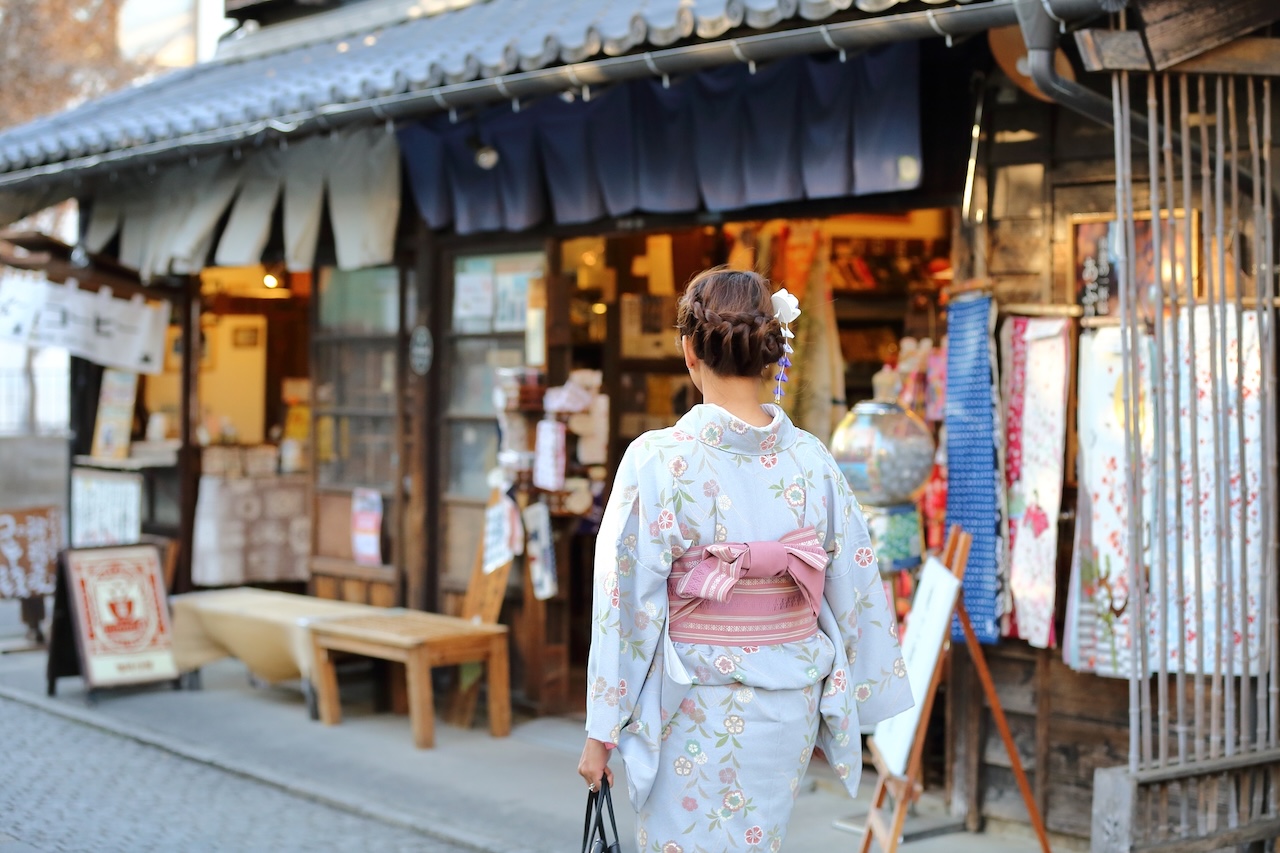
After the Meiji Restoration (1868–1889), Kawagoe Castle was gradually reduced in size, but its main hall, relocated and reconstructed chief retainer quarters, and main entrance still remain. These structures have been collectively designated as an Important Cultural Property of Saitama Prefecture. Notably, only two honmaru goten still exist in all of Japan—Kawagoe Castle and Kochi Castle—making it an exceptionally rare historical site.
There are several shops in the Kawagoe area that offer kimono rentals, allowing you to dress in a beautiful kimono and stroll through the traditional streets or explore the castle. It’s a great opportunity to capture memorable photos in this charming setting!
Kawagoe Warehouse District
Access: From Kawagoe Station on the Tobu Tojo Line or JR Kawagoe Line, or from Hon-Kawagoe Station on the Seibu Shinjuku Line, take the Tobu Bus to Ichiban-gai.
Kawagoe Castle Honmaru Goten
Address: 2-13-1, Kuruwa-machi, Kawagoe-shi, Saitama
Access: From Kawagoe Station on the Tobu Tojo Line or JR Kawagoe Line, or from Hon-Kawagoe Station on the Seibu Shinjuku Line, take the Tobu Bus to Fudanotsuji and walk about 8 minutes. Alternatively, take the Koedo Loop Bus to the Museum & Art Museum stop for direct access.
That concludes our introduction to the must-visit spots in Gyoda and Kawagoe. If you’re a fan of Sengoku era history, don’t miss this chance to explore these legendary sites!
